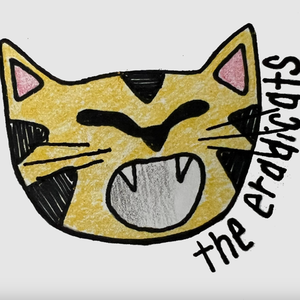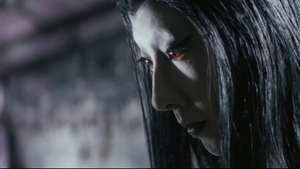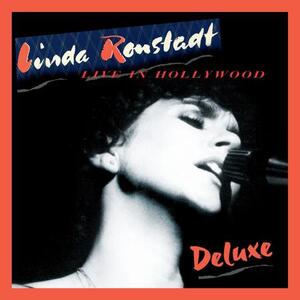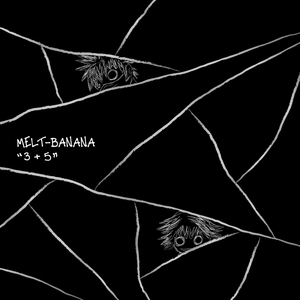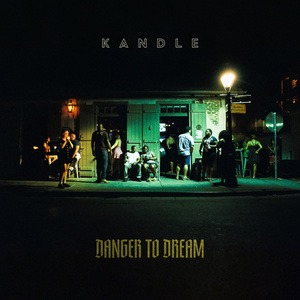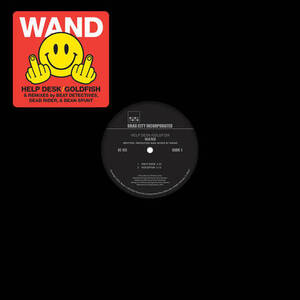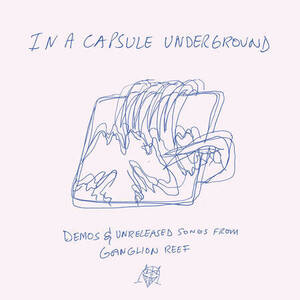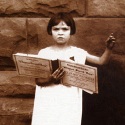
Awake, My Soul: The Story of the Sacred Harp
directed by Matt and Erica Hinton
Awake Productions

Sacred harp, or shaped note singing, is the oldest American songform, religious or secular. Making its way over from England along with the earliest settlers, the sound of the Sacred Harp was based on three or four part harmonies undertaken collectively by the whole congregation of a church. It was a more democratic notion of group singing, there is no set choir director, no need for extensive musical training (or music reading), and there is most definitely no audience. Everyone sings, no matter how “strong” or “weak” the voice. Loud/soft dynamics are basically out the window too. Sacred harp singing is loud and boisterous and this close to being discordant; the first few times you hear it, it will strike you as something alien (especially compared to gospel), but goddamn (sorry) if it won’t hook you eventually with the spontaneous conviction of the voices and a Spector-esque wall of sound. In time, the more advanced musicality and sentimental notions of gospel displaced the heady caterwaul and fire’n’brimstone sermonizing of sacred harp singing. The music and practice migrated down South, where it remains rooted to this day. During the folk revival of the ’60s, Sacred harp also experienced a revival, with venerable performers crisscrossing the country and leading all-day sings throughout the country, like some crazy bizarro-world rock stars.
This documentary, made by filmmakers and sacred harp singers Matt and Erica Hinson, is an excellent balance of scholarly history – several authorities on the subject are interviewed and the journey of the sacred harp from Europe to the American South is traced in detail – and performance footage gathered over several years of visiting churches all over the South. They also interview singers and enthusiasts young and old. The performance footage is really valuable, primary source stuff; ecstatic clips of everyday folks singing their hearts out as the communal spirit builds and builds.
Gratifyingly, the filmmakers “get” facets of sacred harp music that was missed in a previous PBS documentary. They stress the democratic and communal and ecstatic aspects of a sacred harp singing event. It’s an all-day event, starting in the morning, with a break for a huge picnic lunch, and then back at it until late in the afternoon. Everyone gets a turn “leading” the gathering, that is, standing in the middle of the church, calling out the song number and the key of the song and then absorbing this outpouring of massed voices rising imperfectly into something way beyond the individual. Very telling too is when, on several different occasions, longtime sacred harp singers (good, fine Christians, no doubt) speak with huge earnest smiles of the transcendence they feel in the volume of the music, reverberating off the walls of the meeting hall. And then – then – even better is when this one old gentleman talks happily about how, in a sacred harp sing, technical acumen doesn’t matter and singing skill doesn’t matter and people say the notes don’t sound right and the combination doesn’t sound right, but in the end it works, and suddenly he sounds like one of the Ramones or the Cramps.
A 92-year old watchmaker talks about writing snatches of sacred harp music between fixing watches; it’s an inspiring image that people feel empowered to write music without formal training… just the fa so la me notes. Reminds me of that famous issue of the Sniffin’ Glue fanzine which diagrammed three basic guitar chords and admonished here’re the chords, now start a band. It’s the human moments that stand out the most. An elderly fellow recalls courting his future wife at a sacred harp singing. A middle-aged dude with a mustache talks about how the young folks coming to the sacred harp sings need to step it up if they want to sit in the front row. Longtime singers swap war stories and playfully needle one another. A kid with a terrible bowl cut talks about the power of shaped note singing with an earnest grin plastered on his face, and man it just wins you right over.
Over the ending credits there is a lovely clip of the Hintons driving at night together, a sacred harp songbook in the hands of the passenger, singing the songs of the sacred harp together, to chase away the darkness. Metaphorical or literal, whatever floats yer boat…
Awake My Soul: http://www.awakemysoul.com





